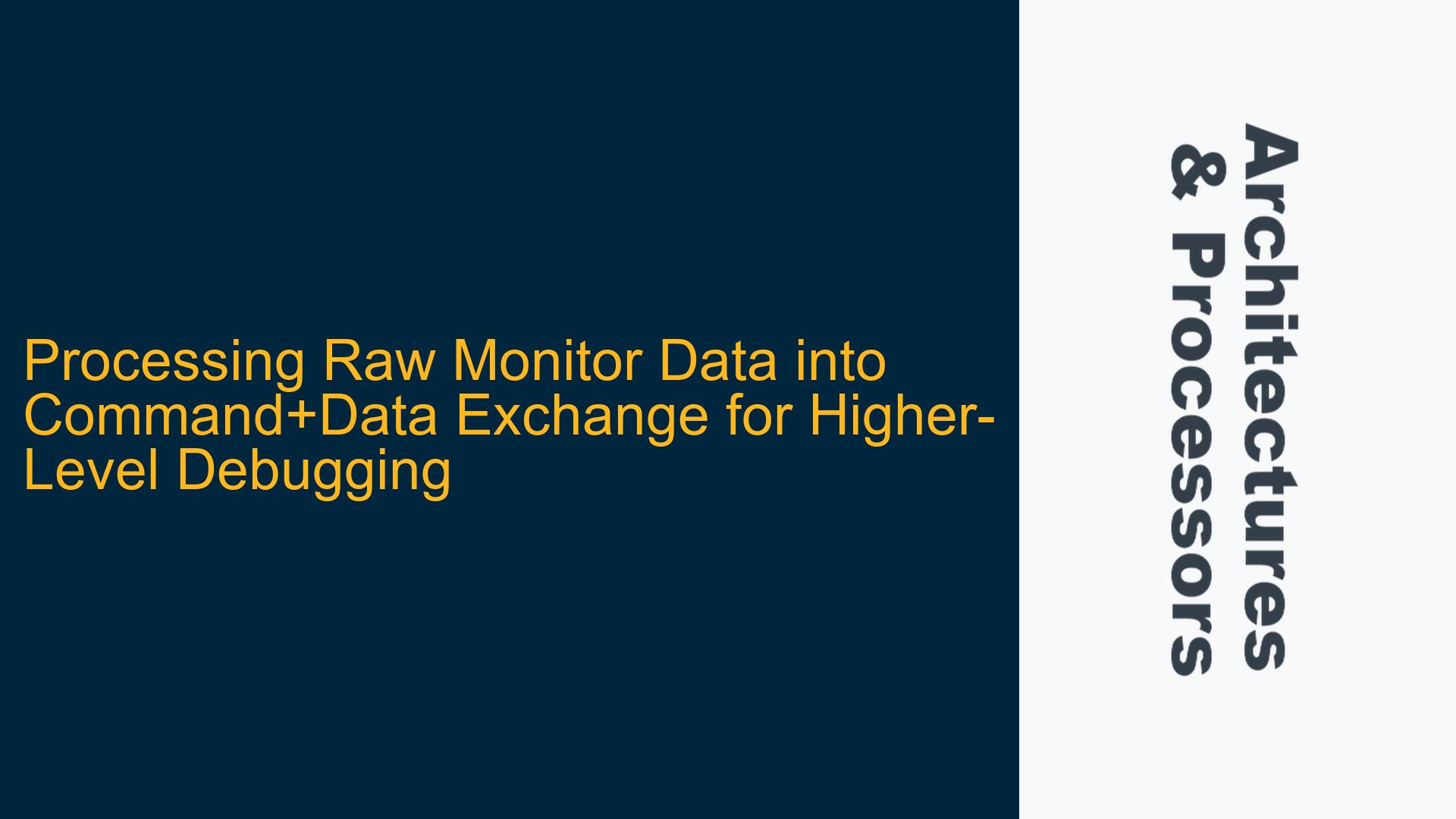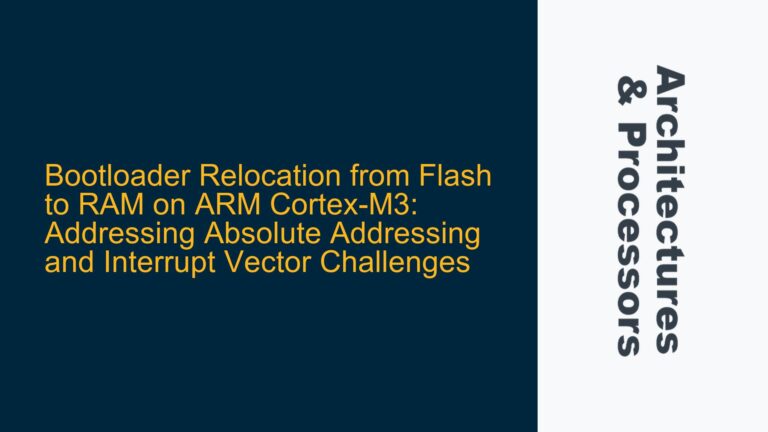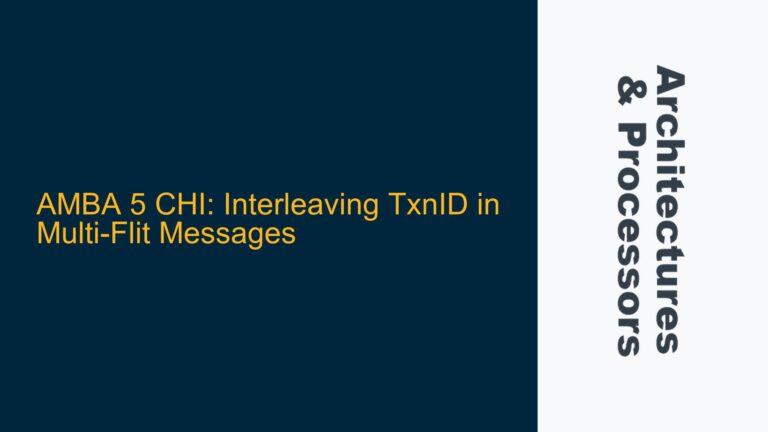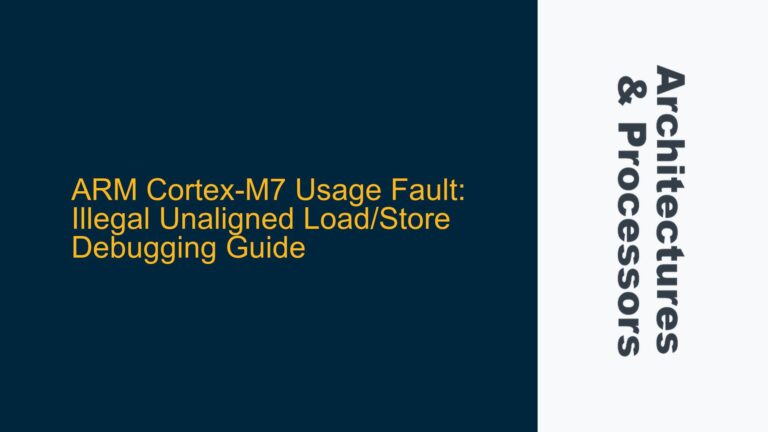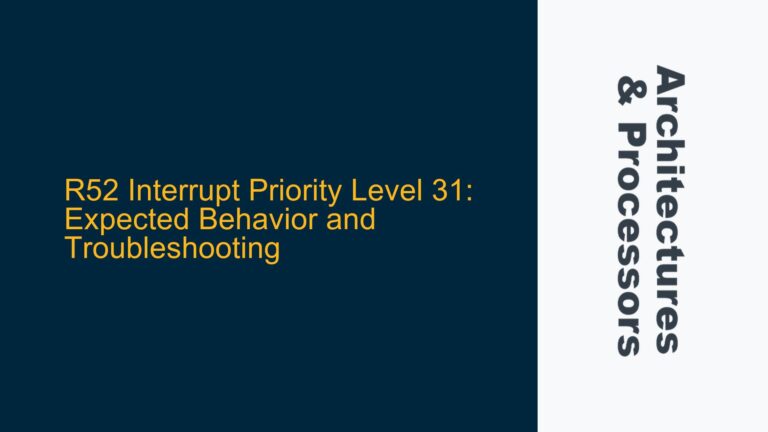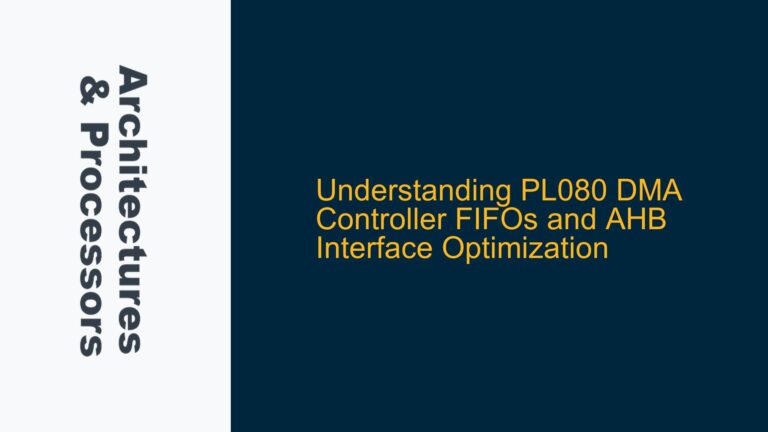ARM SoC Data Link Layer to Command+Data Exchange Conversion Challenges
In ARM-based SoC designs, one of the critical tasks during verification is processing raw data captured from monitors at the data link layer and converting it into a structured set of commands and data exchanges at a higher abstraction level. This conversion is essential for debugging complex test scenarios at the system level, where understanding the flow of commands and data across various subsystems is crucial. However, this process is often fraught with challenges, including mismatches between the raw data format and the expected command structure, timing issues, and synchronization problems between layers.
The primary objective of this conversion is to create a higher-level representation of the transactions that can be used to debug system-level test scenarios. This involves interpreting the raw data from the data link layer, which typically includes packet headers, payloads, and control signals, and mapping them to a set of commands and data exchanges that reflect the intended behavior of the system. The challenge lies in ensuring that the conversion process is accurate, efficient, and scalable, especially in complex SoCs with multiple interconnected subsystems.
One of the key issues in this process is the potential for misinterpretation of the raw data. The data link layer captures a wide range of information, including error correction codes, flow control signals, and timing information, which may not be directly relevant to the higher-level commands. Additionally, the raw data may be fragmented or interleaved with data from other transactions, making it difficult to reconstruct the original command sequence. This can lead to incorrect or incomplete command sets, which can hinder debugging efforts and lead to false positives or negatives in the verification process.
Another challenge is the synchronization between the data link layer and the higher-level command layer. The data link layer operates at a lower level of abstraction, where timing and signal integrity are critical. In contrast, the higher-level command layer is more concerned with the logical flow of commands and data. Ensuring that the converted commands accurately reflect the timing and sequence of events at the data link layer is essential for effective debugging. This requires careful consideration of the timing constraints and synchronization mechanisms used in the SoC design.
Protocol Mismatch and Timing Synchronization Issues
The conversion of raw data from the data link layer to a set of commands and data exchanges at a higher level is often complicated by protocol mismatches and timing synchronization issues. These issues can arise from differences in the way data is represented and processed at different layers of the SoC architecture. For example, the data link layer may use a specific encoding scheme or packet format that is not directly compatible with the command structure used at the higher level. This can lead to misinterpretation of the data and incorrect command generation.
One common cause of protocol mismatches is the use of different data formats or encoding schemes at the data link layer and the higher-level command layer. For instance, the data link layer may use a bit-oriented protocol, while the higher-level command layer may expect byte-oriented data. This discrepancy can result in incorrect parsing of the raw data and the generation of invalid commands. Additionally, the data link layer may include control signals or error correction codes that are not relevant to the higher-level commands, further complicating the conversion process.
Timing synchronization issues can also arise during the conversion process. The data link layer operates at a much faster clock rate than the higher-level command layer, and the raw data may be subject to delays or jitter due to signal propagation and processing. This can lead to misalignment between the raw data and the corresponding commands, making it difficult to accurately reconstruct the command sequence. In some cases, the raw data may be buffered or queued before being processed, introducing additional latency and potential timing errors.
Another potential cause of timing synchronization issues is the use of different clock domains in the SoC design. The data link layer and the higher-level command layer may operate in different clock domains, requiring careful handling of clock domain crossings (CDC) to ensure proper synchronization. Failure to properly synchronize the data between clock domains can result in metastability issues, where the data is sampled incorrectly, leading to incorrect command generation and potential system failures.
Implementing a Robust Data Link Layer to Command+Data Exchange Conversion Mechanism
To address the challenges of converting raw data from the data link layer to a set of commands and data exchanges at a higher level, a robust and systematic approach is required. This approach should include careful analysis of the data link layer protocol, proper handling of timing and synchronization issues, and the use of advanced verification techniques to ensure the accuracy and reliability of the conversion process.
The first step in implementing a robust conversion mechanism is to thoroughly analyze the data link layer protocol and understand the structure and format of the raw data. This includes identifying the key components of the data link layer packets, such as headers, payloads, and control signals, and determining how they map to the higher-level commands. It is also important to identify any protocol-specific features, such as error correction codes or flow control mechanisms, that may need to be handled during the conversion process.
Once the data link layer protocol has been analyzed, the next step is to design a conversion mechanism that can accurately interpret the raw data and generate the corresponding commands and data exchanges. This mechanism should include a parser that can extract the relevant information from the raw data and a command generator that can construct the higher-level commands based on the extracted information. The parser should be designed to handle any protocol-specific features, such as variable-length packets or bit-oriented data, and should be able to detect and handle errors in the raw data.
To address timing synchronization issues, the conversion mechanism should include proper handling of clock domain crossings and timing constraints. This may involve the use of synchronizers or FIFO buffers to ensure that the raw data is properly synchronized between the data link layer and the higher-level command layer. Additionally, the conversion mechanism should be designed to handle any delays or jitter in the raw data, ensuring that the generated commands accurately reflect the timing and sequence of events at the data link layer.
Finally, the conversion mechanism should be thoroughly verified to ensure its accuracy and reliability. This can be done using a combination of simulation and formal verification techniques. Simulation can be used to test the conversion mechanism under a wide range of scenarios, including normal operation, error conditions, and edge cases. Formal verification can be used to prove the correctness of the conversion mechanism and ensure that it meets the specified requirements. Additionally, the conversion mechanism should be integrated into the overall SoC verification environment, allowing it to be tested in the context of the entire system.
In conclusion, converting raw data from the data link layer to a set of commands and data exchanges at a higher level is a complex but essential task in ARM-based SoC design and verification. By carefully analyzing the data link layer protocol, addressing timing and synchronization issues, and implementing a robust conversion mechanism, it is possible to create a reliable and accurate representation of the system’s behavior that can be used for effective debugging and verification.
